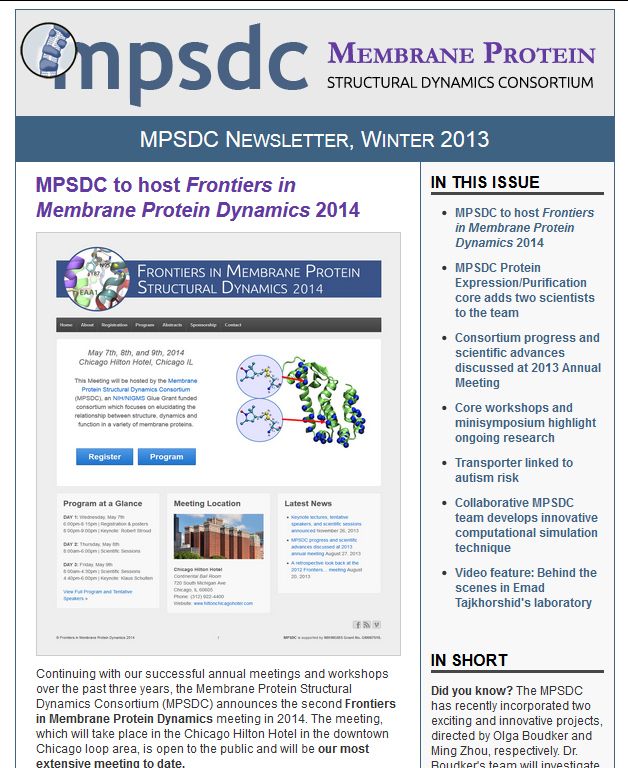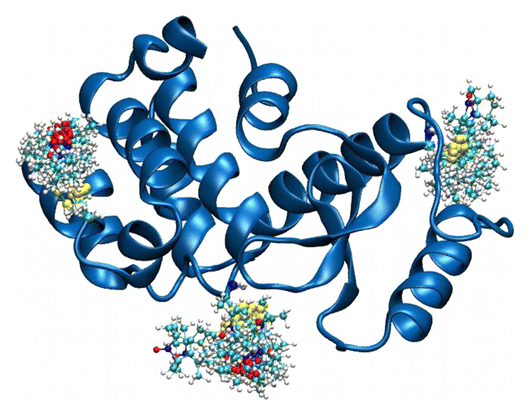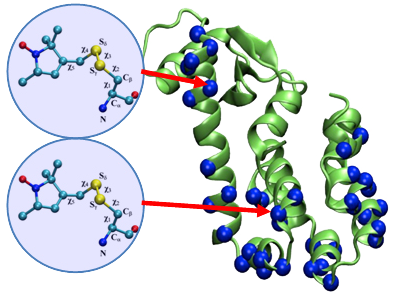The Great Lakes Consortium for Petascale Computation has awarded access to the Blue Waters supercomputer — which is capable of performing quadrillions of calculations every second and of working with quadrillions of bytes of data — to 10 diverse science and engineering projects, including a project titled “The mechanism of the sarco/endoplasmic reticulum ATP-driven calcium pump”, spearheaded by Benoît Roux and his team.

Blue Waters supercomputer. Click to enlarge.
The Great Lakes Consortium for Petascale Computation is a collaboration among colleges, universities, national research laboratories, and other educational institutions that facilitates the widespread and effective use of petascale computing. The computing and data capabilities of Blue Waters will assist researchers in addressing questions of biology, nanoelectronics, ecological and economic impacts of climate change, and more.
Roux’s work with the Blue Waters supercomputer will make a significant contribution to the Conformational Transitions in P-class ATPases Project of the Membrane Protein Structural Dynamics Consortium (MPSDC), in which Roux collaborates with Francisco Bezanilla. Roux’s team provided the following description of their research plans with Blue Waters:
“ Maintaining optimum concentration gradients of monovalent (Na+, K+) and divalent (Ca2+) ions across cell membranes is a crucial part of signaling and regulation of many biological processes. Positively charged ions, being impermeable to largely hydrophobic cell membranes, need special passages to travel in and out of the living cell. Nature’s answer to this problem is two classes of membrane proteins called ion channels and ion pumps. Ion channels are responsible for the passive transport of selected ions, while ion pumps consume ATP to transport ions against their gradient.
Understanding the detailed molecular mechanism of ion pumps has been a long standing problem. In the early parts of the previous decade, a major breakthrough came in the form of determination of atomic resolution X-ray crystal structures of calcium transporting pump of sarcoplasmic reticulum of skeletal muscles (SERCA) that uses ATP hydrolysis as a source of free energy. Detailed structural studies of the pump under different conditions provided analogues of various intermediates in the reaction cycle and revealed important changes in the tertiary structure of the protein both in the cytoplasmic and in the transmembrane parts. Two major outstanding issues are the pathways of the ions to and from the transmembrane binding sites and a detailed understanding of the large scale conformational changes among various functionally relevant states. We will apply all-atom molecular dynamics (MD) and string method with swarms-of-trajectories to study transition pathways among various experimental structures.
The allocations provided on the Blue Waters supercomputer will allow us to study this important membrane protein with unprecedented detail. This study will reveal the molecular mechanism of an important step in the ion pumping process of a P-type ATPase and will provide a solid ground to understand other ATP-driven ion pumps such as the sodium-potassium pump, which shares very high sequence similarity with SERCA. ”
Congratulations to Benoît and his team for receiving this important award!
Learn more about the Blue Waters supercomputer »
 Fresh off the press: the first edition of the semi-annual Membrane Protein Structural Dynamics Consortium (MPSDC) e-newsletter!
Fresh off the press: the first edition of the semi-annual Membrane Protein Structural Dynamics Consortium (MPSDC) e-newsletter!![]() Do you want to receive the latest MPSDC updates via email? Sign up here!
Do you want to receive the latest MPSDC updates via email? Sign up here!![]() Remember, you can also stay up the date with the MPSDC through our active Facebook page!
Remember, you can also stay up the date with the MPSDC through our active Facebook page!

 The 2014 International Biophysics Congress, which is taking place in Brisbane, Australia this year, will have the pleasure of hosting none other than MPSDC Director
The 2014 International Biophysics Congress, which is taking place in Brisbane, Australia this year, will have the pleasure of hosting none other than MPSDC Director 
 At the conference,
At the conference,  The article co-authored by Benoît Roux and Jeane Weare was highlighted by the Journal of Chemical Physics on their
The article co-authored by Benoît Roux and Jeane Weare was highlighted by the Journal of Chemical Physics on their 






